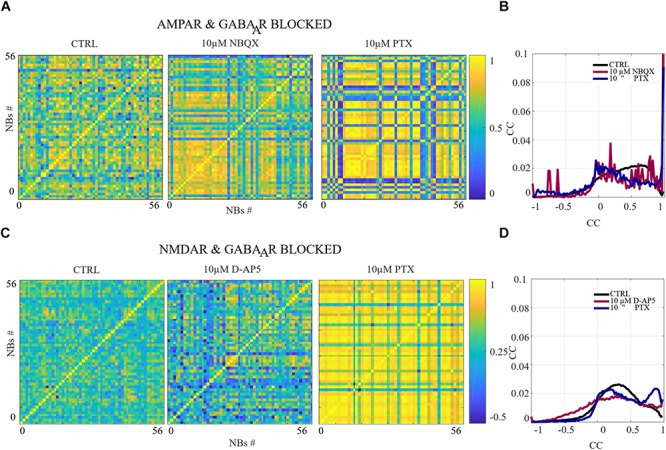FIGURE 5.

The excitation-inhibition balance changes the spatio-temporal patterns. (A,C) CC matrices computed for pairwise-spike-time-difference matrices between each NB in each condition of acute applications. (B,D) Mean distributions of CC across the NBs and networks are shown. (A,B) The acute AMPAR blockade with 10 μM NBQX changed the distribution of the similarity of spatio-temporal patterns significantly (pranksum < 0.001) in three out of seven networks in comparison to the CTRL condition. However, the number of NBs was too low to evaluate statistical significance in the other four AMPAR blocked networks. The acute disinhibition with 10 μM PTX in AMPAR blocked networks significantly increased (pranksum < 0.001) the similarity of spatio-temporal patterns in four out of seven cultures in comparison to the CTRL condition (N = 56 NBs, 7 networks per condition). (C,D) The acute NMDAR blockade with 10 μM D-AP5 did not significantly change the CC matrices/diversity of spatio-temporal patterns. The acute GABAAR blockade with 10 μM PTX of NMDAR blocked networks significantly increased (pranksum < 0.001) the similarity between spatio-temporal patterns in four out of six cultures in comparison to the CTRL condition (N = 56 NBs 6 network per condition). ∗∗∗pranksum < 0.001, ∗∗pranksum < 0.01, ∗pranksum < 0.05.
